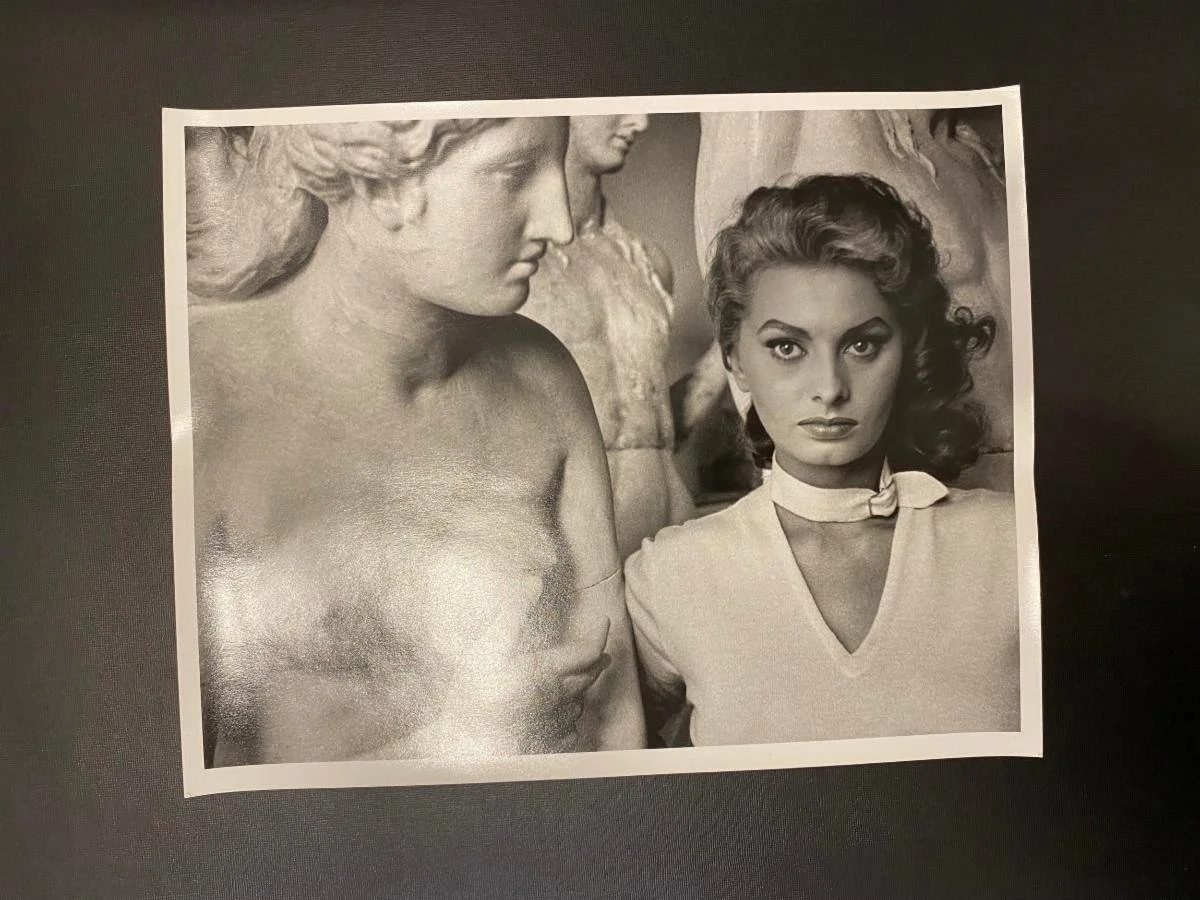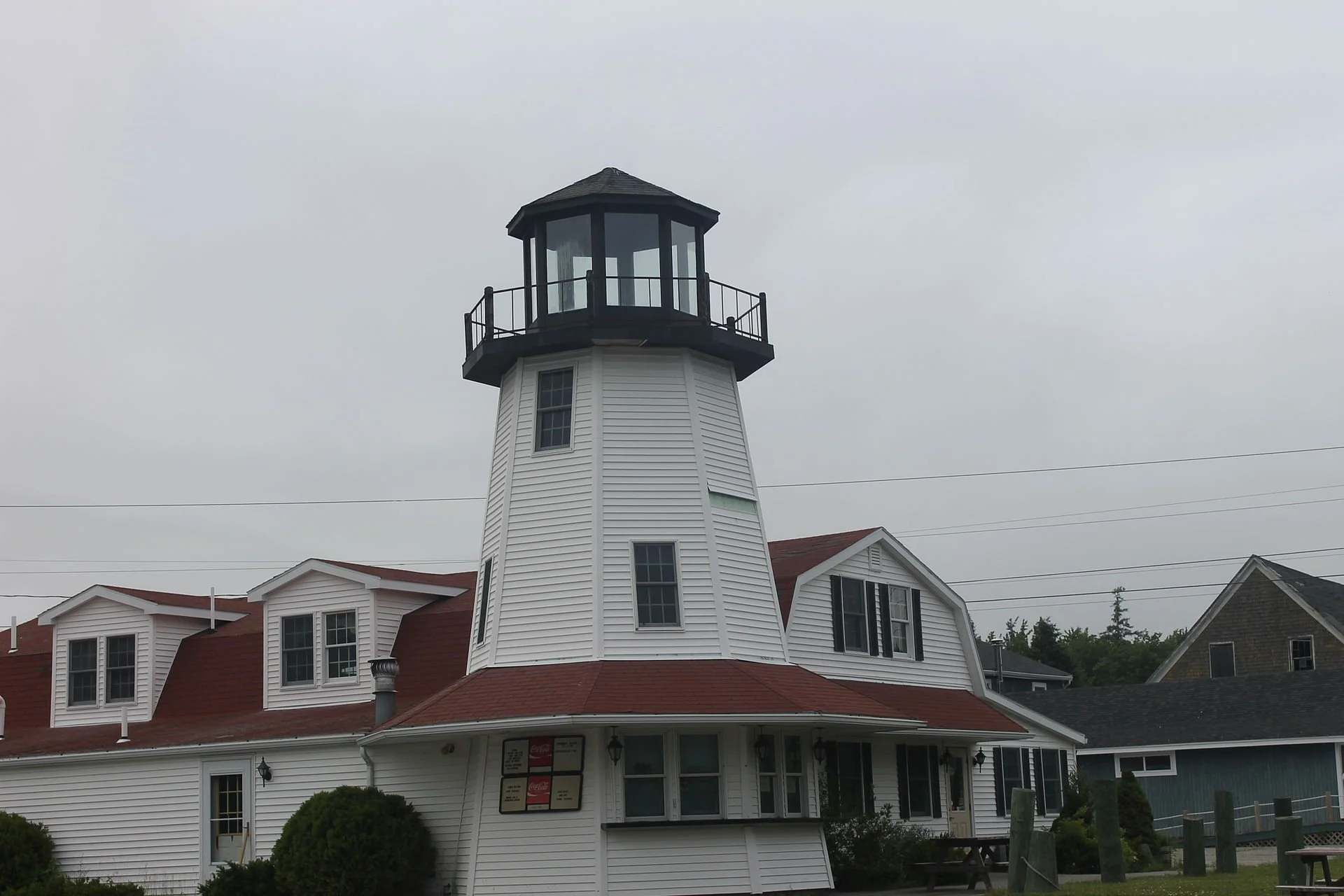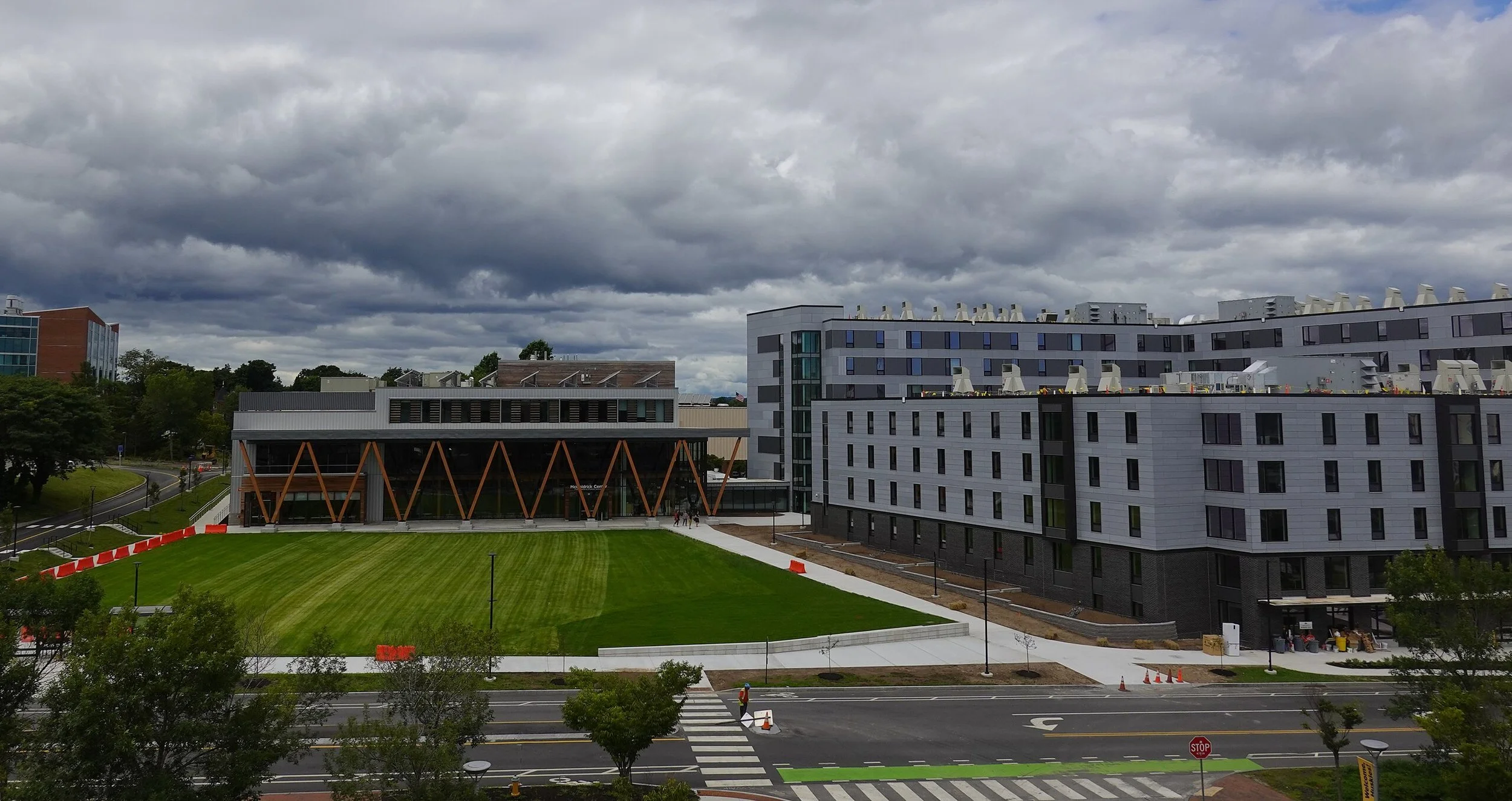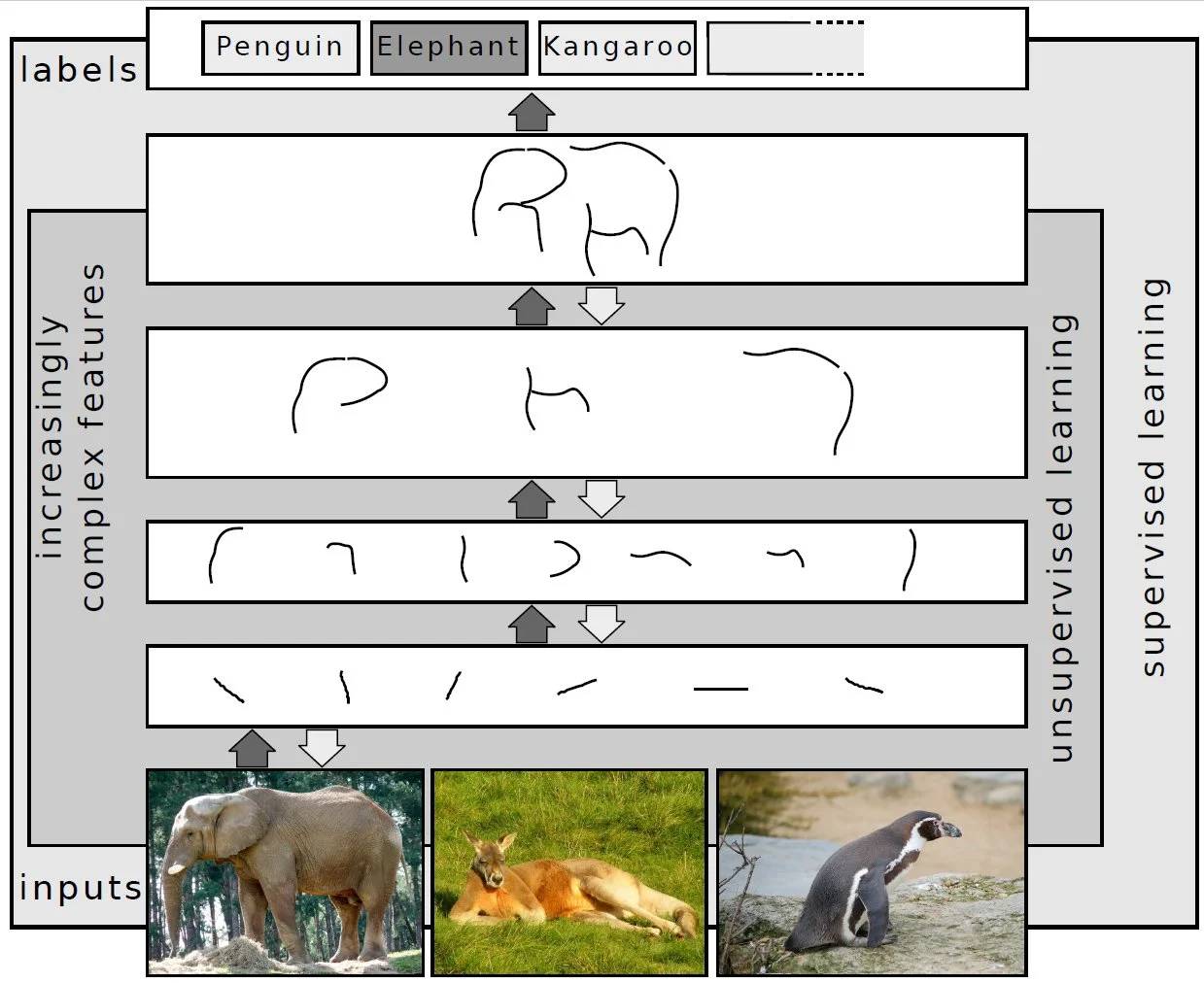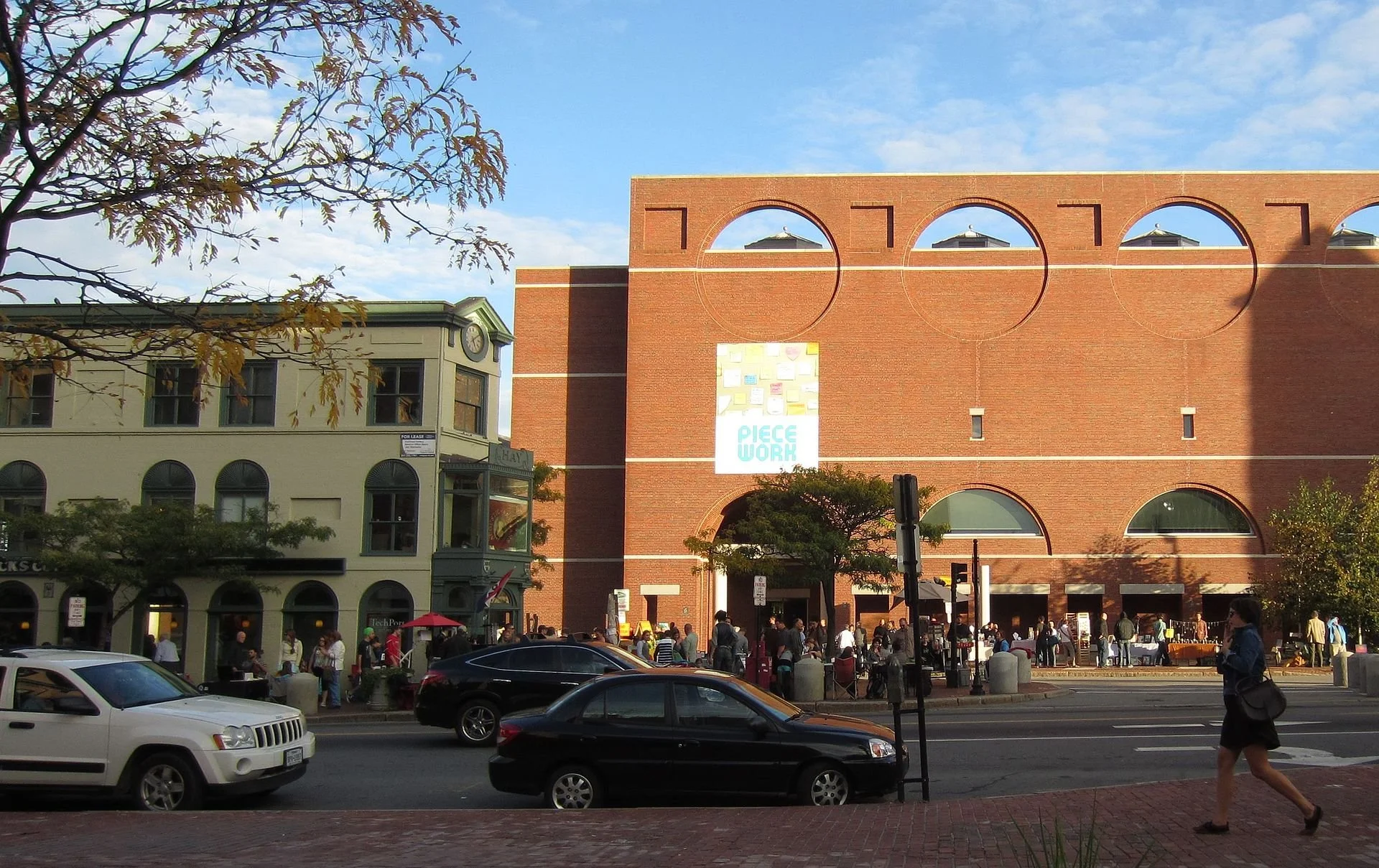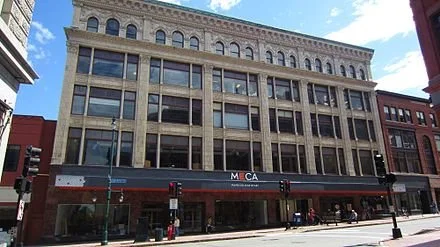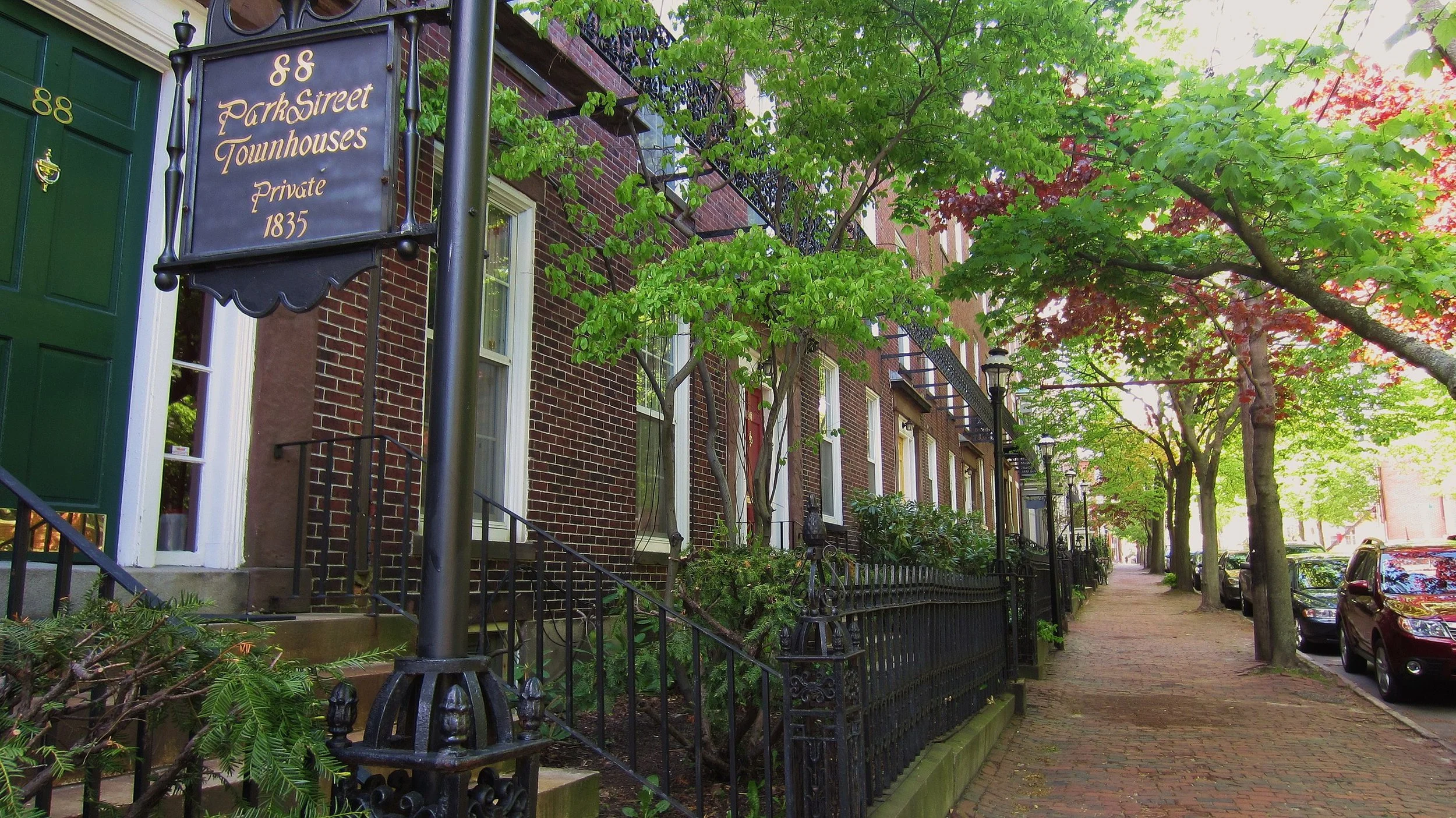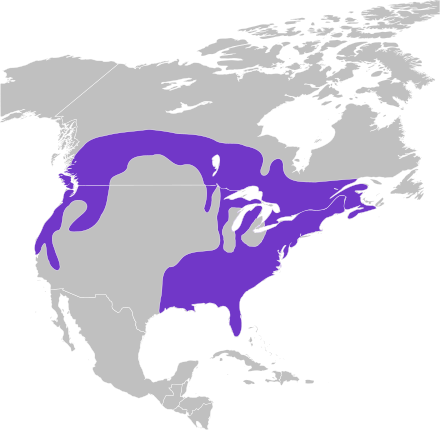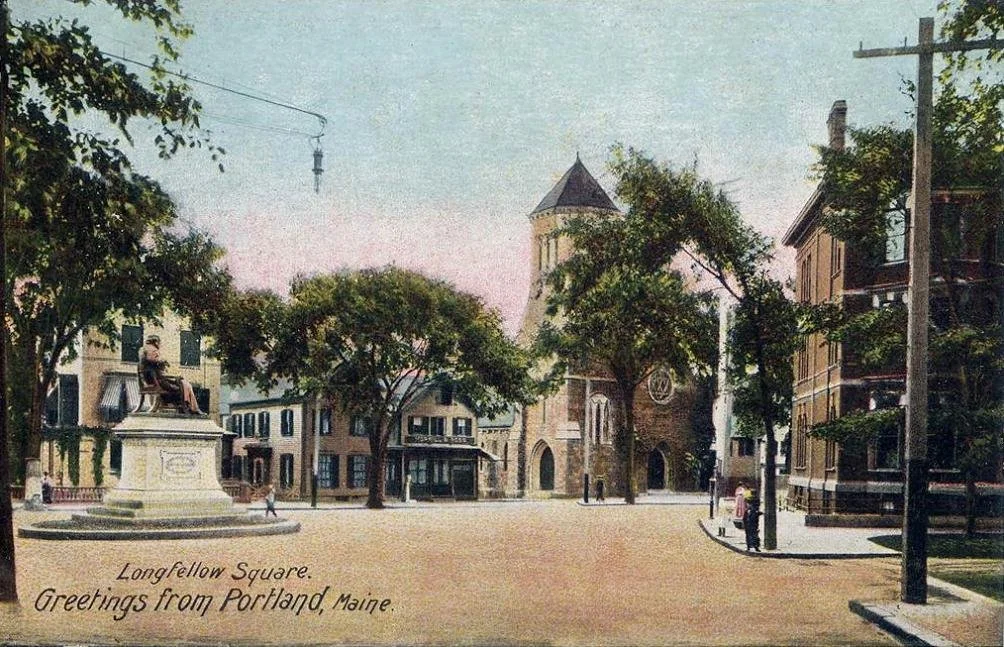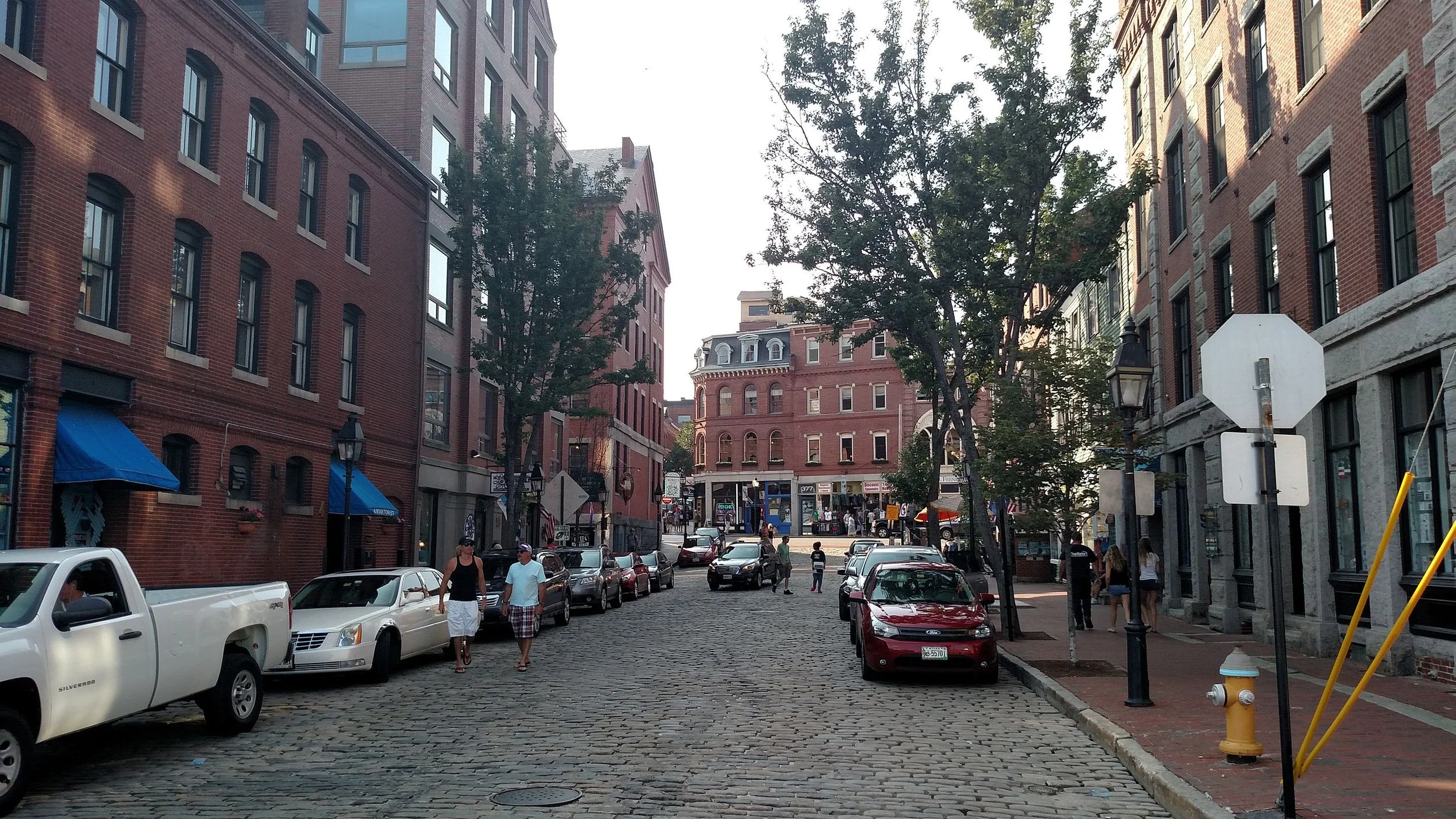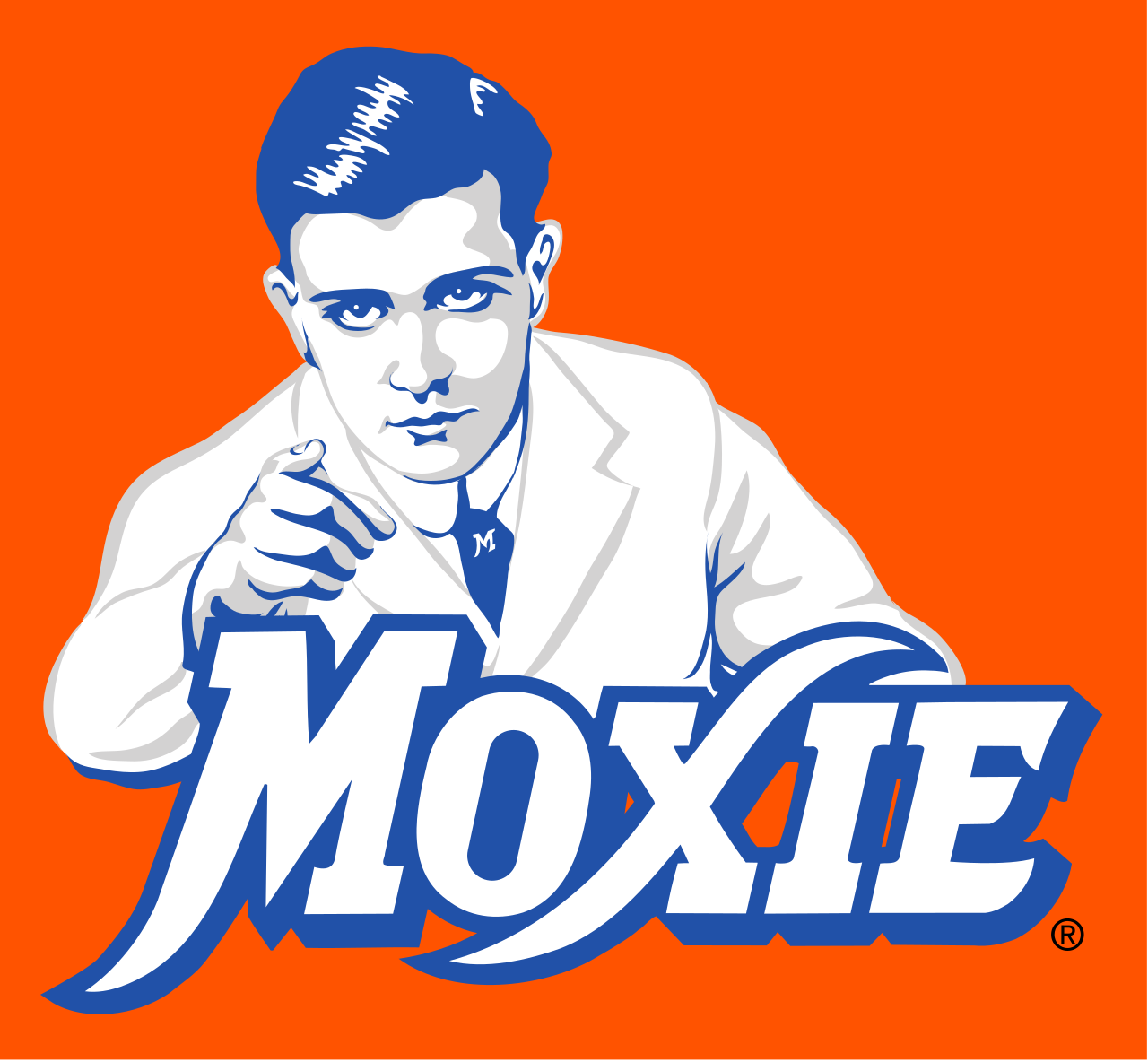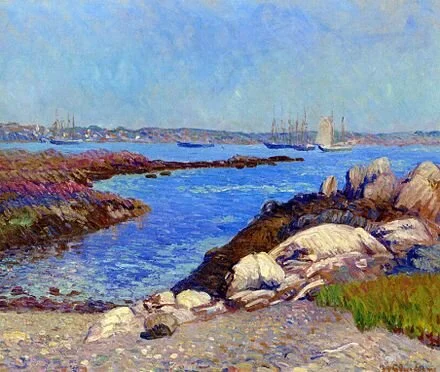
Northeastern University breaks ground on Portland campus
-- Northeastern University's rendition of what its Roux Institute campus on the Portland waterfront will look like.
Edited from a New England Council report
“On Friday, Sept. 13, New England Council member Northeastern University held a groundbreaking ceremony to mark construction on its new campus in Portland, Maine, that will let the university to double the student body at the location.
“The Roux Institute at Northeastern University’s new campus will mark a significant step forward for Northeastern. The institute opened in 2020, thanks to a $100 million donation from technology entrepreneur David Roux, a Maine native, as well as another $100 million gift months later. The school has 800 students today, but it expects to have room for 2,000 when the new campus is completed, in 2028. The Roux is focused on technology research and development and graduate education.
“‘Our mission is to be a driver of the future Maine economy…. A larger permanent home for the university’s efforts in Maine is essential,’ the Roux Institute’s chief administrative officer, Chris Mallett, said in an interview.’’
In Maine, pushing the boundaries of basket art
“First Light” (ash, sweetgrass, birchbark, porcupine quills, and synthetic dye), by Jeremy Frey, a member of the Passamaquoddy Tribe, in his show “Jeremy Frey: Woven,’’ through Sept. 15, at the Portland Museum of Art. It’s from the collection of the Farnsworth Museum of Art, Rockland, Maine. Copyright Jeremy Frey
Photograph by Jared Lank (Mi'kmaq)
The museum says:
“Jeremy Frey is a seventh-generation basket maker who is one of the most celebrated Indigenous weavers in the country. His work is meticulously detailed and pushes the boundaries of what is possible in his medium. "I try to create a newer and more elaborate version of my work each time I weave," he said.
Roman royalty
“Sofia Loren, Rome, 1954” (silver print) by George Daniell (1911-2002), in group show at the Maine Museum of Photographic Arts, in Portland, through Jan. 31. The photographer and painter was a resident of Trenton, Maine, near Bar Harbor, from 1960 to his death.
The features the work of 26 photographers, including Ansel Adams, George Daniel, and Linda Connor and aims, the museum says, to explore "the themes of portraits, still life, interiors, sea scapes, landscapes and collage.’’
The Trenton Lighthouse, in Trenton, Maine, is not a lighthouse but a business building, now containing a restaurant, The Beacon.
— Photo by Billy Hathorn
The four-masted schooner Margaret Todd; Bald Porcupine Island is beyond the pier and the Bar Harbor Inn is to the right.
— Photo by NewTestLeper79
'Singing to us'
The Casco Bay Bridge, a drawbridge linking Portland and South Portland, Maine
— Photo by Rigby27
The end of Maine Route 77, which goes over the Casco Bay Bridge.
“It's all language, I am thinking
on my way over the drawbridge to South Portland,
driving into a wishbone blue, autumn sky, maple
red, aspen yellow — oaks, evergreens
stretching out in sunlight. Isn't this all
message and sign, singing to us?’’
— From “Today, the Traffic Signals All Changed for Me,’’ by Martin Steingesser (born 1937), Maine-based poet
To hear the whole poem, hit this link.
At the University of Southern Maine, ethics training in artificial intelligence
The McGoldrick Center for Career & Student Services, left, the Bean Green, and the Portland Commons dorm at the University of Southern Maine’s Portland campus.
— Photo by Metrodogmedia
AI at work: Representing images on multiple layers of abstraction in deep learning.
— Photo by Sven Behnke
Edited from a New England Council report:
“The University of Southern Maine (USM) “has received a $400,000 grant from the National Science Foundation to develop a training program for ethical-research practices in the age of artificial intelligence.
“With the growing prevalence of AI, especially such chatbots as Chat-GPT, experts have warned of the potential risks posed to integrity in research and technology development. Because research is an inherently stressful endeavor, often with time constraints and certain desired results, it can be tempting for researchers to cut corners, leaning on artificial intelligence to imitate the work of humans.
“At USM’s Regulatory Training and Ethics Center, faculty are studying what conditions lead to potential ethical misconduct and creating training sessions to make researchers conscious of their decisions and thoughts during their work and remain aware of stressors that might lead to mistakes in judgment. Faculty at USM believe this method will allow subjects to proactively avoid turning to unethical AI assistance.
“‘We hope to create a level of self-awareness so that when people are on the brink of taking a shortcut they will have the ability to reflect on that,’ said Bruce Thompson, a professor of psychology and principal at the USM ethics center. ‘It’s a preemptive way to interrupt the tendency to cheat or plagiarize.’’’
Black Mainer anti-racism hero
“I felt that fighting discrimination was the most important thing I could do as an elected official. I said then and I believe now that any doctrine of superiority is scientifically false, morally condemnable, socially unjust and dangerous.’
— Gerald E. Talbot (born 1931 and one of the few Mainers with an African-American background), civil-rights leader and former state representative from Portland.
An eighth-generation Mainer, Talbot traced his ancestry to black Revolutionary War veteran Abraham Talbett.
Talbot was the first Black state legislator in Maine, the founding president of the Portland chapter of the National Association for the Advancement of Colored People (NAACP), and president of the Maine State Board of Education under Gov. Joseph Brennan. In 2020, the Riverton Elementary School, in Portland, was renamed the Gerald E. Talbot Community School.
‘Beauty and its opposites’
“Onward” (paper, thread, encaustic paint, oil stick on braced panel), by Portland, Maine-based artist Kimberly Curry.
From her artist statement:
“Using my home state of Maine as muse, as well as my travels around the world, I am inspired by the beauty in ordinary things.
“I have a style that ranges from structured seascapes of Maine that capture a point in time to following a concept in a loose abstract way. Among other things, I explore beauty and its opposites.’’
She has an expressive sense of humor and playfulness that sometimes will emerge in the work as well.
The Portland Museum of Art in the Arts District of Portland.
Bd2media -
The Porteous Building, a 1904 beaux arts-style building, houses the Maine College of Art & Design’s classrooms, libraries and galleries.
— Photo by Motionhero
Cold-weather creatures
“Snow Crows” ( monoprint), by Susan Amons, in the group show with Lisa Houck and Richard Remsen entitled “Managerie a Trois,’’ at Cove Street Arts, Portland, Maine, through Jan. 21.
— Photo courtesy Cove Street Arts.
The gallery says the show presents animal-themed artwork focusing on creatures often associated with winter. For more information, please visit here.
Main Street in downtown Biddeford
— Photo by Lookinforahome
Europeans first settled in what became Biddeford, which had been well-populated by Native Americans, in 1616. In the 19th Century, Biddeford became a prosperous industrial center, with granite quarries and brickyards and lumber, grain and textile mills. In recent years, some of the old mills have been converted into retail stores, art studios, cultural-event spaces and upscale housing.
Biddeford hosts the University of New England.
University of New England med school will move to Portland
Maine Medical Center, in Portland, close to where the University of New England’s medical school will move.
Edited from a New England Council (newenglandcouncil.com) report
“The University of New England, will move its osteopathic medical school from Biddeford, Maine, to Portland. This new location will allow the university to expand the size of its facilities to accommodate more students, which will provide relief to the ongoing workforce problem in the health-care industry.
“This move will fast-track Portland (home of the Maine Medical Center) to be a regional hub for biotechnology and medicine. The university could break ground on this new construction in a month thanks to the Portland Planning Board’s unanimous approval of the plans. The construction will feature a 112,000 square-foot four-story central building to hold all the university’s health-care programs, including dentistry, nursing and the medical school itself.
UNE’s new facility will advance the college’s efforts in inter-professional education, an approach to training in which students are taught in a team-based, multidisciplinary setting. The new location will increase the number of students that the medical program can accommodate by 20 percent, raising the classes from 165 to 200 students. Additionally, the new facility will allow Maine Medical Center doctors to easily engage with UNE students because of the proximity to their facilities. This opens the doors to mentorship, teaching and continuing education in a lab setting for students.
UNE President James Herbert said, ‘We are the workforce engine for the health-care workforce in the state. I want UNE to be the national model for how you do IPE in rural settings’’’.
Dare to stare back
“Lemonhead in The Garden (In Spring)’’ (oil on paper), byEric Helvie, in the 16-person show “At Face Value,’’ at Cove Street Arts, Portland, Maine, through Aug. 27
The juror Vincent Maxime Daudin selected works that "reflected the multiple layers of 'worth' behind every single personality, from their current monetary appraisal to their timelessly emotional quality." The gallery says: “The portraits in this show look right back at viewers and dare them to engage as though they are looking another human in the eyes.’’
Judith Graham: In Maine and elsewhere, many elderly struggle to pay for basic necessities
Farmer's market in Monument Square, downtown Portland
— Photo by vBd2media
Townhouses in Portland’s West End, completed in 1835
— Photo by Motionhero
PORTLAND, Maine
Fran Seeley, 81, doesn’t see herself as living on the edge of a financial crisis. But she’s uncomfortably close.
Each month, Seeley, a retired teacher, gets $925 from Social Security and a $287 disbursement from an individual retirement account. To make ends meet, she’s taken out a reverse mortgage on her home here that yields $400 monthly.
So far, Seeley has been able to live on this income — about $19,300 a year — by carefully monitoring her spending and drawing on limited savings. But should her excellent health worsen or she need assistance at home, Seeley doesn’t know how she’d pay for those expenses.
More than half of older women living alone — 54% — are in a similarly precarious financial situation: either poor according to federal poverty standards or with incomes too low to pay for essential expenses. For single men, the share is lower but still surprising — 45%.
That’s according to a valuable but little-known measure of the cost of living for older adults: the Elder Index, developed by researchers at the Gerontology Institute at the University of Massachusetts at Boston.
A new coalition, the Equity in Aging Collaborative, is planning to use the index to influence policies that affect older adults, such as property tax relief and expanded eligibility for programs that assist with medical expenses. Twenty-five prominent aging organizations are members of the collaborative.
The goal is to fuel a robust dialogue about “the true cost of aging in America,” which remains unappreciated, said Ramsey Alwin, president and chief executive of the National Council on Aging, an organizer of the coalition.
Nationally, and for every state and county in the U.S., the Elder Index uses various public databases to calculate the cost of health care, housing, food, transportation and miscellaneous expenses for seniors. It represents a bare-bones budget, adjusted for whether older adults live alone or as part of a couple; whether they’re in poor, good or excellent health; and whether they rent or own homes, with or without a mortgage.
Results from the analyses are eye-opening. In 2020, according to data supplied by Jan Mutchler, director of the Gerontology Institute, the index shows that nearly 5 million older women living alone, 2 million older men living alone, and more than 2 million older couples had incomes that made them economically insecure.
And those estimates were before inflation soared to more than 9% — a 40-year high — and older adults continued to lose jobs during the second and third years of the pandemic. “With those stressors layered on, even more people are struggling,” Mutchler said.
Nationally and in every state, the minimum cost of living for older adults calculated by the Elder Index far exceeds federal poverty thresholds, which are used to calculate official poverty statistics. (Federal poverty thresholds used by the Elder Index differ slightly from federal poverty guidelines. Data for each state can be found here.)
One national example: The Elder Index estimates that a single older adult in good health paying rent needed $27,096, on average, for basic expenses in 2021 — $14,100 more than the federal poverty threshold of $12,996. For couples, the gap between the index’s calculation of necessities and the poverty threshold was even greater.
Yet eligibility for Medicaid, food stamps, housing assistance and other safety-net programs that help older adults is based on federal poverty standards, which don’t account for geographic variations in the cost of living or medical expenses incurred by older adults, among other factors. (This isn’t an issue for older adults alone; the poverty measures have been widely critiqued across age groups.)
“The poverty rate just doesn’t cut it as a realistic look at the struggles older adults are having,” said William Arnone, chief executive officer of the National Academy of Social Insurance, one of the new coalition’s members. “The Elder Index is a reality check.”
In April, University of Massachusetts researchers showed that Social Security benefits cover only a fraction of what older adults need for basic living expenses: 68% for a senior in good health who lives alone and pays rent and 81% for an older couple in the same situation.
“There’s a myth that Social Security and Medicare miraculously take care of all of people’s needs in older age,” said Alwin, of the National Council on Aging. “The reality is they don’t, and far too many people are one crisis away from economic insecurity.”
Organizations across the country have been using the Elder Index to convince policymakers that older adults need more assistance. In New Jersey, where 54% of seniors are economically insecure according to the index, advocates used the data to protect property-tax relief programs for older adults during the pandemic. In New York, where nearly 60% of seniors are economically insecure, advocates persuaded the legislature to raise the Medicaid income eligibility threshold.
In San Diego, where as many as 40% of seniors are economically insecure, Serving Seniors, a nonprofit agency, persuaded county officials to use pandemic-related stimulus payments to expand senior nutrition programs. As a result, the agency has been able to double production of home-delivered meals, to more than 1.5 million annually.
Officials are often wary of the financial impact of expanding programs, said Paul Downey, president and CEO of Serving Seniors. But, he said, “we should be using a reliable measure of economic security and at least know how well the programs we’re offering are doing.” By law, California’s Area Agencies on Aging use the Elder Index in their planning process.
Maine is No. 5 on the list of states ranked by the share of seniors living below the Elder Index, 56%. For someone in Fran Seeley’s situation (an older adult who is in excellent health, lives alone, owns a house, and doesn’t pay a monthly mortgage), the index suggests $22,560 a year is necessary — $3,200 more than Seeley’s annual income and $9,500 above the federal poverty threshold.
Fran Seeley’s income — from Social Security, a retirement account, and a reverse mortgage — comes to about $19,300 a year. With inflation increasing, “it means I have to cut back in any way I can,” Seeley says.
A look at Seeley’s budget reveals how quickly necessary expenses accumulate: $2,041 annually for Medicare Part B (this is deducted from her Social Security check), $4,156 for property and stormwater taxes, $390 for home insurance, $320 for furnace cleaning, $1,440 for heat, $125 for water, $500 for gas and electricity, $300 for property maintenance, $1,260 for phone and Internet, $150 for car registration, $640 for car insurance, $840 for gasoline at current prices, $300 for car maintenance, and $4,800 for food.
The total: $17,262. And that doesn’t include the cost of medications, clothing, toiletries, any kind of entertainment, or other incidentals.
Seeley’s great luxury is caring for four cats, which she describes as “the light of my life.” Their annual wellness checks cost about $400 a year, while their food costs about $1,080.
With inflation now making her budget even tighter, “it means I have to cut back in any way I can. I find myself going into stores and saying, ‘No, I don’t need that,’” Seeley said. “The biggest worry I have is not being able to afford living in my home or becoming ill. I know that medical expenses could wipe me out in no time financially.”
Judith Graham is a Kaiser Health News Reporter.
Just try to change it
‘‘Fate’’ (handmade paper, thread, Coloraid, encaustic paint, oil stick on braced panel) by Portland, Maine-based artist Kimberly Curry, who says she finds inspiration in the everyday things around her and in landscape.
A Casco Bay Lines ferry returning to Portland after its journey out into the bay
— Photo by Dudesleeper
So close to us
“Pileated {Woodpecker} Feeding Its Young” (photo), by Linda Cullivan, in the 19-person photography show “Birds,’’ at Cove Street Arts, Portland, Maine, through Feb. 19.
The show quotes the great English naturalist, and TV presenter, Sir David Attenborough:
"Everyone likes birds. What wild creature is more accessible to our eyes and ears, as close to us and everyone in the world, as universal as a bird?"
Ms. Cullivan lives in Scarborough, in southern Maine.
The Pileated Woodpecker’s unusual range
Scarborough from the air, looking to the southeast. Note the Prouts Neck Peninsula (where Winslow Homer did many of his paintings), and the Scarborough River and its tributaries.
Higgins Beach in Scarborough
‘Now whispered and revealed’
An early classification of snowflakes by Israel Perkins Warren (1814-1892) American Congregational minister, editor and author who lived in Connecticut and Maine.
Out of the bosom of the Air,
Out of the cloud-folds of her garments shaken,
Over the woodlands brown and bare,
Over the harvest-fields forsaken,
Silent, and soft, and slow
Descends the snow.
Even as our cloudy fancies take
Suddenly shape in some divine expression,
Even as the troubled heart doth make
In the white countenance confession,
The troubled sky reveals
The grief it feels.
This is the poem of the air,
Slowly in silent syllables recorded;
This is the secret of despair,
Long in its cloudy bosom hoarded,
Now whispered and revealed
To wood and field.
“ Snow-Flakes,’’ by Henry Wadsworth Longfellow (1807-1882). The Portland, Maine, native was the most revered American poet of his time as well as a famed professor and translator (most notably of Dante) at Harvard. His reputation, long in eclipse, has lately been in a revival.
Longfellow Square, with statue of the poet, circa 1906
Filing away calm moments
“Dusk III (detail)” (encaustic, oil and 23-karat gold leaf on panel), by Dietlind Vander Schaaf, in her show “We Are Poems,’’ at Bromfield Gallery, Boston, Nov. 3-28. The gallery says that her paintings evoke brief moments of balance and stillness.
She lives in Portland, Maine.
Moulton Street in Portland’s Old Port section. The city is a major arts center.
— Photo by Bd2media
‘Moxie' —the painting, the drink and the courage
“Moxie” (acrylic on canvas), by William Conlon, in the group show art “Here & There,’’ at Cove Street Arts, Portland, Maine, through Sept. 11. Mr. Conlon lives and works on an island in Portland in the summer and in New York City in the fall.
The show features the work of 16 artists bridging the Pine Tree State and New York City.
The gallery says: “Since the early 1800s, artists have been drawn to Maine for its rugged coastline, its mysterious, primeval-feeling forests, and its magnificent quality of light. Later, Modernists such as Marsden Hartley, John Marin, Max Weber, and Marguerite and William Zorach made their summer homes here, establishing a trend that continued, post-World War II, when Maine became an annual destination for New York artists seeking respite and rejuvenation from the grit and the fast-flashing pace of the city.”
Portland from above, looking north along I-295. Note the islands in Casco Bay.
— Photo by Tye dye 9205
The word “moxie’’ has New England roots. It’s a carbonated beverage brand that was among the first mass-produced soft drinks in the United States. It was created around 1876 by Augustin Thompson (born in Union, Maine) as a patent medicine called "Moxie Nerve Food" and was produced in Lowell, Mass.
It’s flavored with gentian root extract, a very bitter substance commonly used in herbal medicine.
Moxie, designated the official soft drink of Maine in 2005, continues to be regionally popular today, particularly in New England. It was produced by the Moxie Beverage Co. of Bedford, N.H., until Moxie was purchased by The Coca-Cola Co. in 2018.
The name has become the word "moxie" in American English, meaning courage, daring, or determination. It was a favorite word of the ruthless Joseph P. Kennedy, father of the famous political family that included President John F. Kennedy. If he liked someone, he’d say “he has moxie!
Corny and then depressing
—Photo by Marek Szczepanek
“Round the point flotillas of swans come trailing
sunlit V’s and W’s, otherworldly,
But a little corny….’’
“Garbo Lobster’s fleet has been sold; Monsanto,
windows broken, whistled an absent air; New
Yorkers long since bought up the nicer houses;
God, it’s depressing….’’
--From “Neoclassical,’’ by Daniel Hall (born 1952), Amherst, Mass.-based poet
Lobstering in Portland, Maine
— Photo by Mrosen99
'The Painted State'
“September Barrens,’’ by New Castle, N.H.-based Grant Drumheller, in the show “Maine: The Painted State: 2021,’’ at Greenhut Galleries, Portland, through May 29. (One thinks of Maine’s famous blueberry barrens here.)
This biennial exhibit celebrates Maine's place in American art history, and how this tradition carries on into the present day, with reinvention on the way. In this 44th year of the exhibit, 45 contemporary Maine artists depict places very important to them, from lush forests to rocky coastlines. But then, Maine's inspiring landscape that has made drawn great artists throughout history.
The famous Wentworth-by-the-Sea resort hotel, in New Castle, N.H., in 1920. The Wentworth is still there, in much modernized fashion.
Nature and abstraction
“Portsmouth (N.H.) Harbor Salt Pile’’ (archival silver gelatin print), by Carl Hyatt, a Portsmouth-based photographer, in the group show “Abstract Nature,’’ through April 24 at Cove Street Arts, Portland, Maine
The gallery explains that the show explores “the abstraction of nature through archival and digital prints. The exhibit title seems like a contradiction on the surface: abstraction is a manmade concept, thus nature on its own can't be abstract. However, abstraction as an art form elevates the essence of its subject by manipulating or removing parts of it.’’
Portsmouth Harbor, New Hampshire by William James Glackens (1909)




